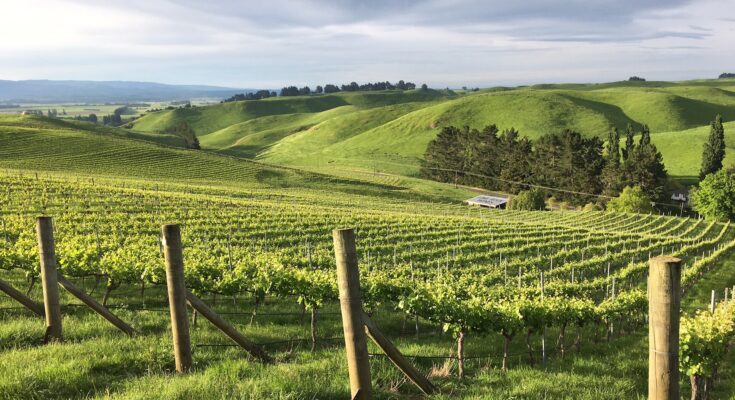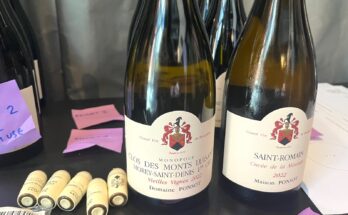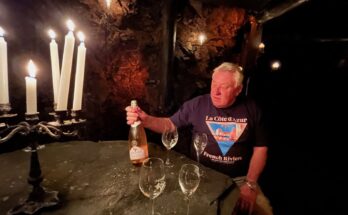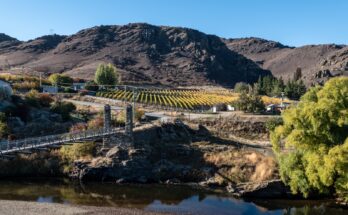Finishing up my exploits in Havelock North, and then travelling towards Wairarapa, it’s an easy decision to call in at Lime Rock to meet Central Hawke’s Bay pioneers Rodger Tynan and Rosie Butler, near Waipawa as I drive south. When I get here, Roger asks me what I’m expecting.. and I told him “I‘ve been told that your Pinot is pretty good; that it’s an amazing place; and that you’re interesting people..”
Rodger Tynan: My background is in ecology, I worked in the Department of Conservation in Australia for twenty years. When we planted in 2001, we didn’t want to rip any soil because we’re on slopes, but also you destroy your soil structure by doing that as well. We’re not organic, we’re ecological. The worst thing you do on here is be biodynamic and plough it all up. You’d have a massive erosion problem, plus you’re destroying your soil microbiology, the fungal growth on plants that help the vines grow. This way if you do have any mealy bugs they tend to stay in the canopy. We used a water jet to do all the planting, and a lot of the plants are on their own roots, and that’s pretty much how we planted the whole vineyard. Nearly killed us (laughs).
Rosie’s the winemaker. Been in the game since 1974. Used to work up in Gisborne for Montana, then was at Roseworthy and did the winemaking course there. That’s where I met her. Met in the Roseworthy pub after a six hour Chemistry exam, as you do. I was either over here seeing her or she was coming over and seeing me, so eventually decided to move to Adelaide and worked with Brian Croser at Petaluma in the Adelaide Hills. He was making the Croser bubbly. Had a good few years there – 13 years in Adelaide. I’d spend a lot of time in the Outback as well. I’d go away for two weeks at a time, camping out and looking at plants and animals which kept me pretty busy. Towards the end of coming up to 2000, the programme was coming to an end – we’d covered just about every paddock of every pastoral lease in the Outback. It was time to look for something new. Rosie was keen to come back home, so we did.
All the surrounding farmland is run by her brothers now, on both sides. We looked over the whole farm area and decided on this spot. North facing slope, close to a road, water that gets pumped up to a tank up there, and away we went. First vintage was 2004 and carried on since. It’s mostly Pinot Noir, about 9 hectares overall. It’s all handpicked, so during the 2020 harvest we just had one at the top, one in the middle, one at the bottom.
In terms of vineyard management we just do one spray before budburst, the we don’t have to spray again. It encourages things like clovers. We don’t use much irrigation – the middle of the slope might get a bit because there’s limestone goes through there.
We pick when it’s right. So it might pick some of this on the top, then a different clone over there might be right, so we’ll pick that. We just pick on ripeness really. On their own roots they just adapt to where they’re growing. The ones you pick first, generally at the top can be more elegant, and the later ones at the bottom may be a bit more grunty. The top label, White Knuckle Hill, named after the steepest bit, we’ve only done in 2013 and 2007. The tractor has taken off a couple of times down there.
We were going to do a bit of champagne originally, but that got a bit hard. The facilities to do it weren’t really available back then. The soil is limestone – a 3 million year old seabed. Crushed up barnacle shells, oysters and scallops. The main river is the Waipawa, and then the Manganuku down here which are quite good trout streams.
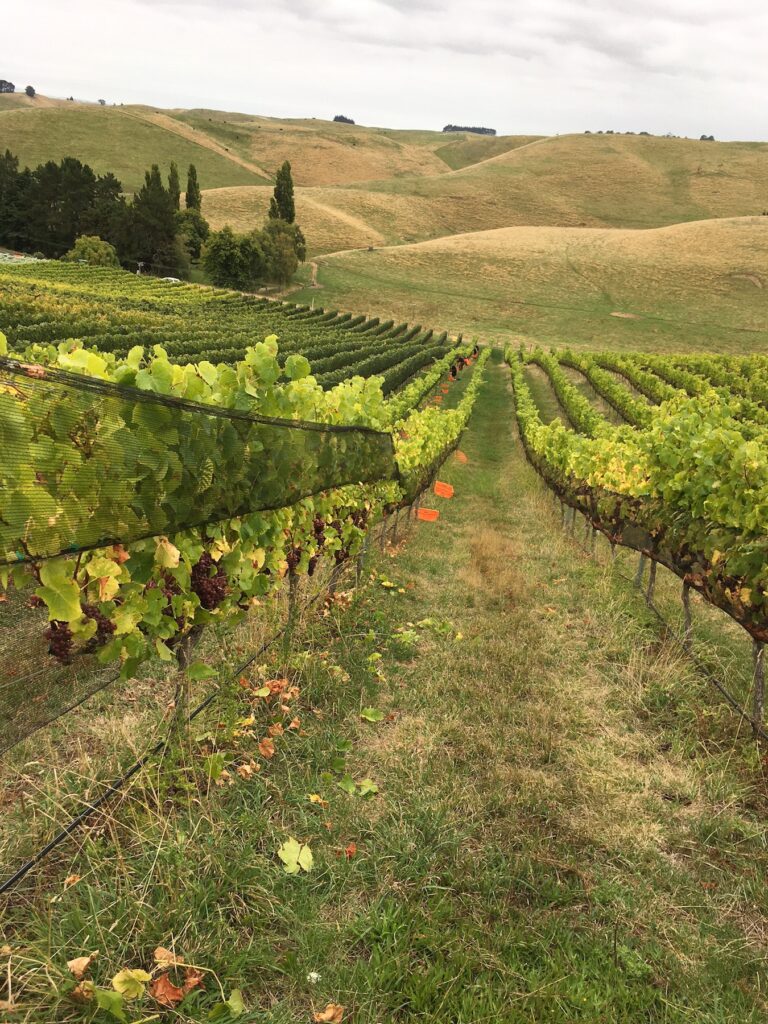
We’re just finishing off shoot thinning at the moment – flowering is early – about two weeks earlier than usual. We keep a bit of grass as you go up to the vineyard and these trees are all natives – flowering hebes, which provide habitat for beneficial insects, and they migrate up into the vineyard along a pollen trail of the grasses and alyssum and stuff like that.
WineFolio: Do you get many visitors out here? Cellar Door traffic?
RT: Yeah, the Cellar Door at the weekends. Depends on what’s going on. Some weekends you might get hardly anyone, but generally you get a steady stream on Saturday afternoons and Sundays. We take people for drive up the hill. It’s our point of difference. No-one else does it because there’s nothing to see. Well it’s usually flat earth. Fairly different from most of Hawke’s Bay.
WF: Certainly something to see from up there! And because of what you are well known for, do you get people who identify you more with Wairarapa than Hawke’s Bay, given that’s not something that Hawke’s Bay is generally known for, but further south is?
Rosie Butler: We’re individual. We’re ourselves. It is a difficult story a bit. Because they like to tell their story of the big reds and Chardonnay. And we should have Chardonnay, but we don’t. People do say our wines are a little bit like those of the Wairarapa but they’re on stone, metal, and we’re on limestone. We’re higher altitude, and some say ours are more like Burgundy. We made a Chardonnay this year.
WF: And a rosé of course – that’s a year round popular drink now.
RB: Yes, we say it’s an all year wine now. Things suddenly ramped up with the rosé too.
RT: We have three levels of Pinot, one of them is really an export label that goes to California, and it does well in restaurants.
WF: You mentioned you are individuals – are you doing something here that is unique?
RB: There’s Pukeora and they’re on limestone, but they’re winding down a bit now. Junction are on gravels of course, so we are fairly unique.
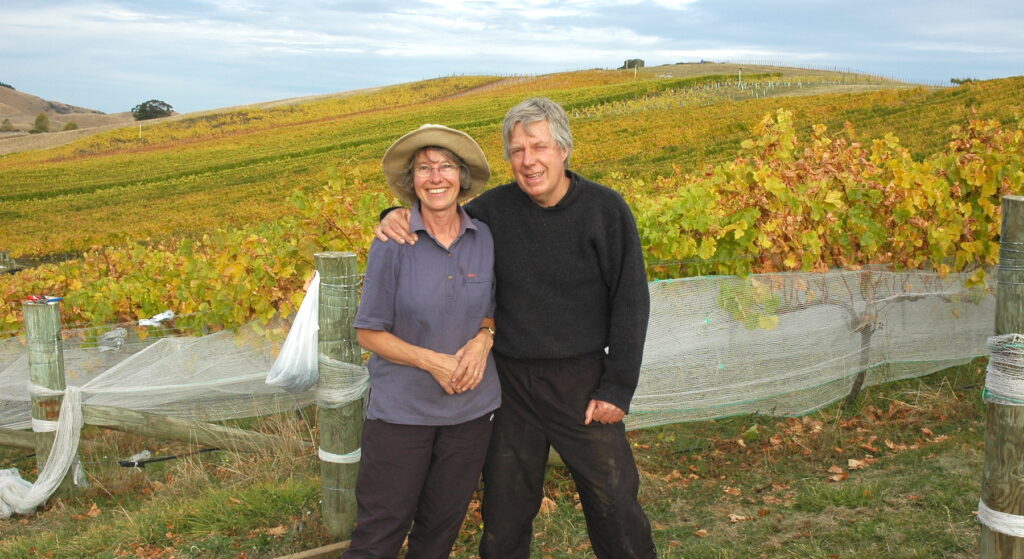
RT: I don’t know of any other vineyard owners or managers who’ve got a background in ecology. We’ve been looking at ecological processes right from the start, and that’s something entirely new, really. I didn’t have any viticulture training at all. Looking after the soil and not disturbing the soil structure. That all helps, thinking ecologically rather than viticulturally.
RB: My background in winemaking goes back to 1974 when I started with Montana, but I was trained as a Medical Lab Technician. Did 6 years of that, and you see a bit through the years!
WF: is there anything else that you would like to do, or like to have done?
RT: In retrospect we should have planted some Chardonnay. But 2001 when we put the vineyard in there was so much Chardonnay around anyway.
RB: Actually I asked Kate Radburnd what are some good clones of Chardonnay, and I was thinking of Mendoza clones, but she said “Oh Rosie have you thought of Sauvignon Blanc – you’ve got to have some of that!” So we started with that. I see now that Mendoza is her favourite (laughs). We should have gone with it!
RT: Why don’t we start you on Gruner? New Zealand’s best Gruner.
WF: Yes, I heard that. Someone told me about it when I said that Gruner was one of the few wines that I don’t really care for.
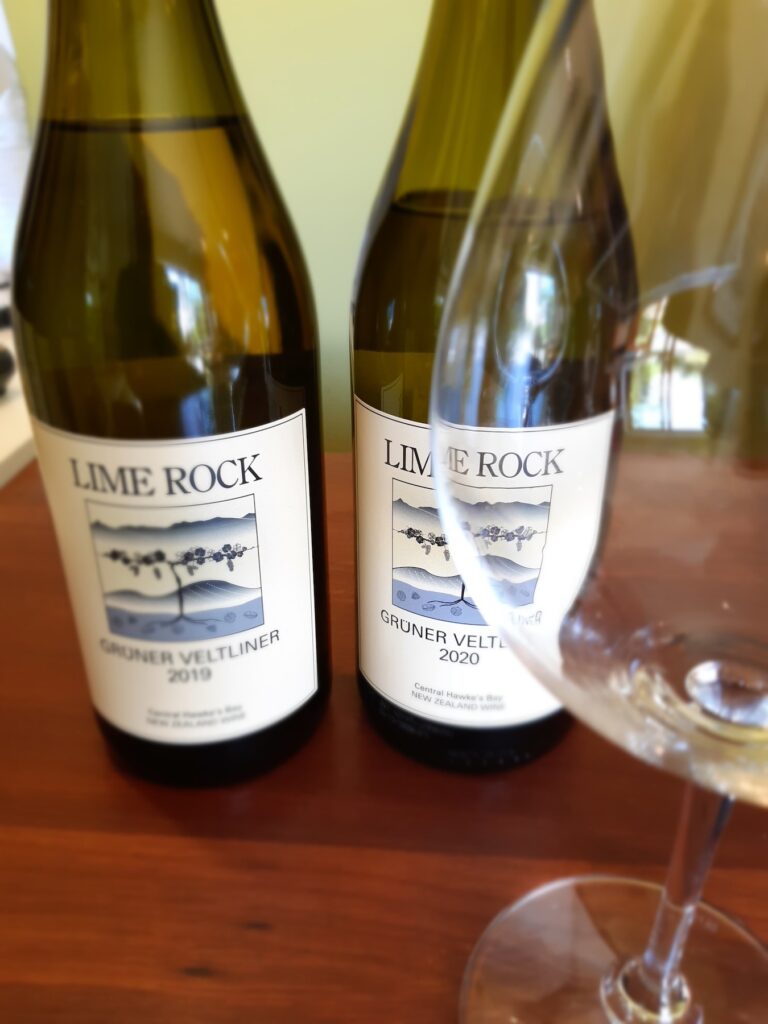
RB: We don’t have a lot of it. We only have 528 vines.
WF: Well I love that. I’ve had Gruner before and literally spat it out. It was thin and acidic. This is rich and aromatic and textural – everything you’d want in a white aromatic wine.
RB: it’s a lovely variety to pick. Lovely big, long bunches and all different ripeness which gives it more depth and character. It sells pretty well at the Cellar door, even when people have never heard of it. We make it fun, so we’ll say “If you can’t remember the name, you can call it GV, or Groovy Jetliner” One woman said “I’m gonna call it ‘Gunner’ because I’m gunner buy it, and take it home and I’m gunner drink it”. We make light of it and they remember it.
WF: That’s really nice. Good herbal nose and it’s got a distinctive salinity to it. The drying in the finish is great too. I would happily drink that. I haven’t had hundreds – don’t get me wrong. This is probably the first of a handful I’ve had that I like.
RT: I was at Winetopia one time. We weren’t showing so I was just there wandering around, and Jules Taylor have it – but they said it’s very hard to sell.
WF: This is 14% alcohol as well – but it’s still a very fresh style of wine, it’s not heavy. Great acidity – got a clean line of acidity. That’s my revelation of the trip so far – a Gruner that really floats my boat. Wow!
RB: (opens the new 2020 bottling) – we just bottled this one. Roger said the last one smelt a little bit like the alyssum, with a delicate floral, but this one is good on the nose too. It’s a thing – bottling.
WF: I’m getting a bit of almond in there as well. Is some of it made in barrel?
RB: One barrel. We like to keep it fresh. Do you see much difference between that one and the first one?
WF: It’s a little lighter in touch, and fresher again – still quite bouncy. Good tension.
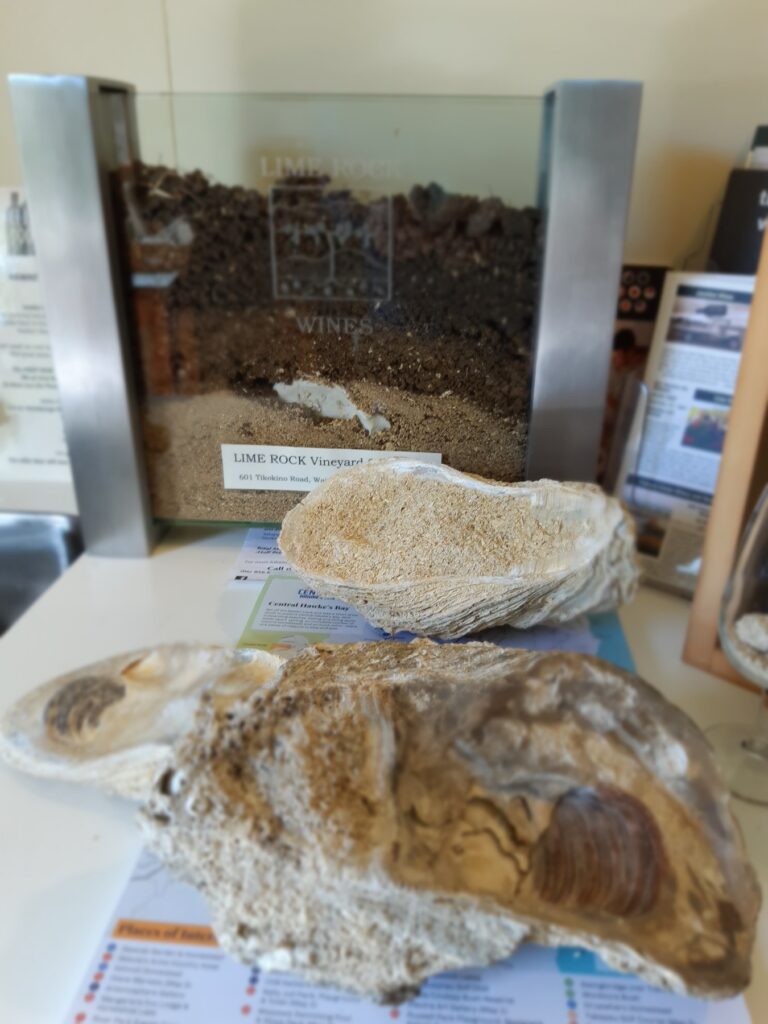
RB: We’ll go for the Pinot Gris next.. we’re a little nervous about it. We’d show you a ’19 but we haven’t any left, everyone just loved it.
WF: Well it smells good! Compared to what some people prefer, I can go quite sweet on whites. I’m also a big Pinot Gris fan, and I’m aware there aren’t too many of us!
RB: We also want you to try the Sauvignon Blanc. We usually hold onto it for a bit, but we’re keen to see how it is as well.
WF: And did I see you’ve got some older bottles for sale? I’m a fan of older Savvy – ten years and so on, I like the flavours it develops. It’s a bit like Pinot Gris – I’ll talk to some people in wine, and they’ll say “Oh well, I don’t really drink that”. Well I do, and I am prepared to taste and talk about it.
And not just because I’m a writer, but I do like the best of those “commercial” varietals like Sav and Pinot Gris – we shouldn’t dismiss them.
RB: This is the ’15. The thing is, with our Sauvignon Blanc, is it’s down by the river on the deep soils and it goes up on the slopes, so you get a mixture of different ripeness. It’s just two cane, low yield – so it’s not Marlborough savvy. It’s maybe 5 kilo a vine, if that.
We have three tiers of Pinot. The restaurants love it. It’s the ‘Kota’ – it’s shell in Maori. The vineyard is north-facing limestone slopes and some of the shells are the size of the bottle. We sold it first to the UK – to Majestic. Then we have the black label Pinot – our ‘classic’ and this one is a ’14. And the top level has only been made twice – this is a 2013. ‘White Knuckle’ – it’s a real identity – in the years after we had bigger bunches and got a lighter colour. I remember showing Rod McDonald the blend we were going to do and he looked at the colour and said “well it’s not White Knuckle is it?”
WF: That ‘black label’ one has quite a bit of savoury character, balanced with a sweetness in the palate too. Dry, but lovely ripe fruit. Love the lighter colour to it. Doesn’t have to be jet black to be tasty Pinot. It’s a more elegant expression of Pinot. And the White Knuckle Hill is quite brooding, dark and complex. Do you win many awards and trophies?
RT: The 2008 Pinot won the Trophy in Aussie for Pinot at the Australian Boutique Wine awards. You get a lot that are more fruit-forward that jump out at you. But we get 5 stars you know? We entered one lot in the Wine New Zealand magazine and we sent them three Pinots and got the Top 3. They couldn’t believe it and they rang us up and said “Are you sitting down – you’ve just taken out the Top Pinot. Are you still sitting – you took out the second one as well”.
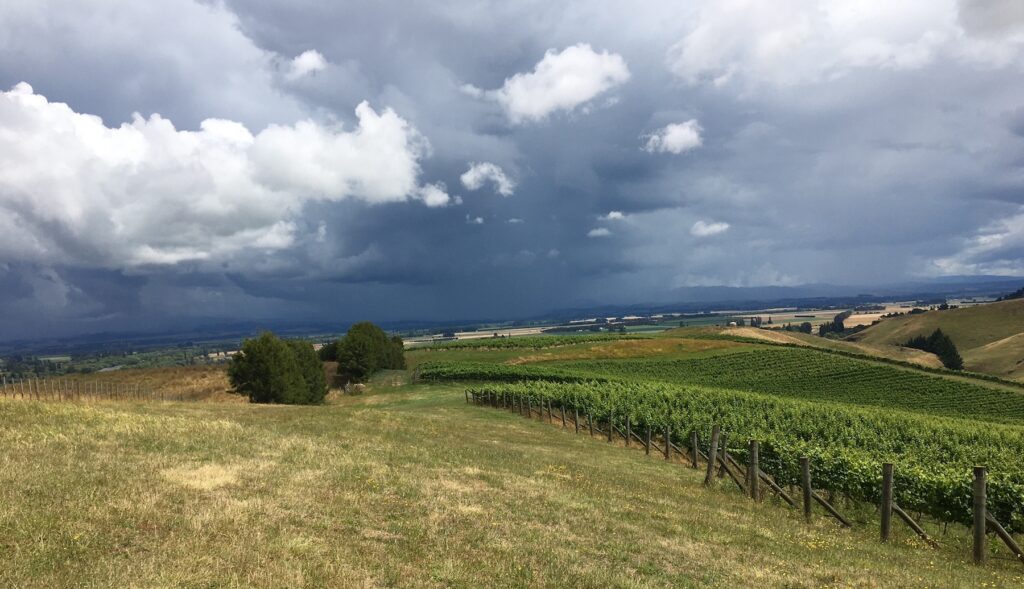
RB: Ours don’t always shine out I don’t think. But I think we’re a different style.
WF: What’s the future for you guys – did I hear the place is up for sale? You haven’t got kids to pass it on to?
RT: Yeah, it is. It hasn’t been on the market really with COVID, as overseas interest couldn’t come in anyway. We’ve got one son who’s more into fashion and things like that. There’s no way he would do it.
WF: but this is the sort of place that could get taken on and after a while you look back at it and think “Look what they’ve done with the place!”
RB: I hope so. We’d like someone, with plenty of money, to build a Cellar Door right up at the top – Fantastic views!

